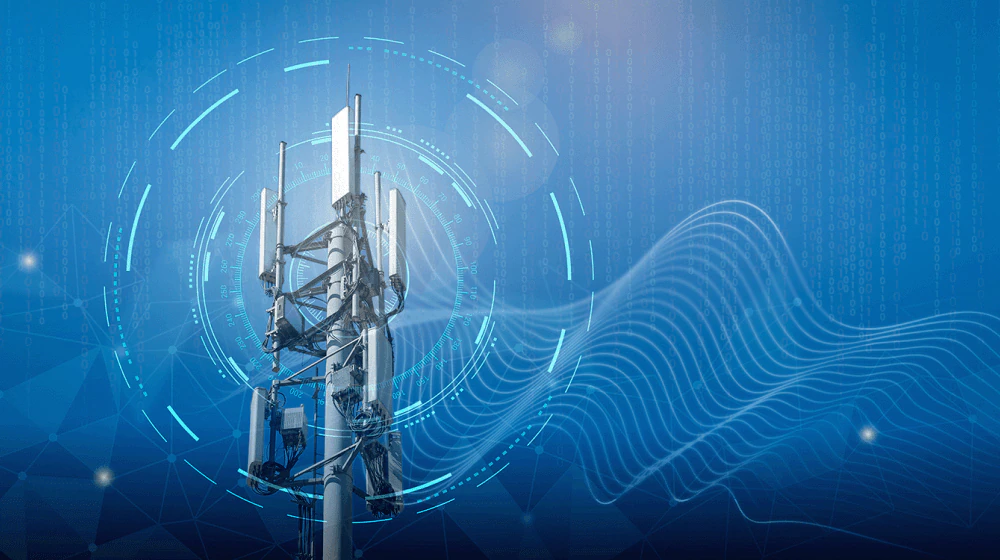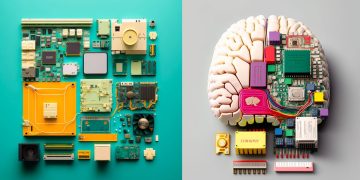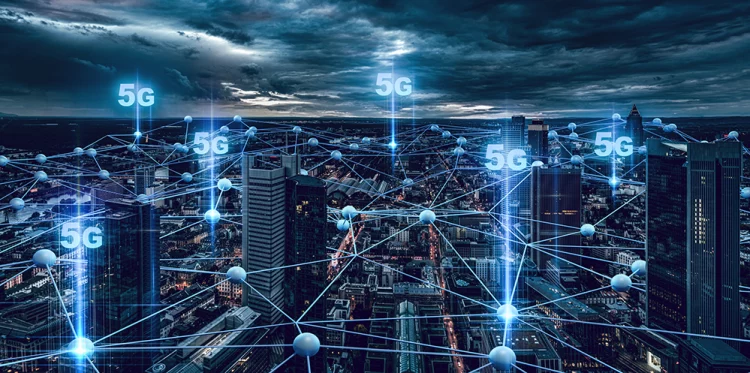The roll-out of 5G networks marks a pivotal moment in the evolution of global connectivity. As the fifth generation of mobile telecommunications technology, 5G promises to revolutionize how we communicate, work, and interact with the world. With faster speeds, lower latency, and greater capacity, 5G networks are poised to support a host of new applications and innovations. From transforming mobile internet experiences to enabling the rise of smart cities and Internet of Things (IoT) devices, 5G is set to reshape the digital landscape in profound ways. This article will explore how the roll-out of 5G is changing mobile internet and connectivity worldwide and what we can expect in the coming years.
1. Understanding 5G: The Next Evolution in Mobile Networks
To appreciate the significance of 5G, it’s essential to understand how it differs from its predecessors—4G and 3G. While 4G revolutionized mobile internet by enabling faster data speeds and seamless video streaming, 5G takes this to a whole new level. At its core, 5G offers faster speeds, lower latency, and greater network capacity, which translates into an improved experience for consumers and new capabilities for businesses and industries.
1. Blazing-Fast Speeds
One of the most notable features of 5G is its speed. The technology is capable of delivering download speeds that are up to 100 times faster than 4G, with theoretical speeds reaching up to 20 Gbps. This means users can download large files, stream high-definition videos, and play cloud-based games with virtually no buffering or lag. For businesses, the faster speeds of 5G will allow for real-time data exchange and enhanced communication, making it easier to leverage cloud computing, data analytics, and advanced technologies.
2. Lower Latency for Real-Time Communication
In addition to faster speeds, 5G offers ultra-low latency, reducing the time it takes for data to travel between devices and the network. Latency on 5G networks is expected to be as low as 1 millisecond, compared to 30-50 milliseconds on 4G networks. This low latency is crucial for applications that require real-time communication, such as autonomous vehicles, remote surgery, augmented reality (AR), and virtual reality (VR). In these scenarios, delays could be disastrous, so the reduced latency of 5G ensures that these technologies can function with minimal interruption.
3. Increased Capacity for IoT Devices
5G is also designed to support an explosion of connected devices, making it the ideal network for the growing Internet of Things (IoT). As more devices, sensors, and appliances become connected to the internet, there is a need for networks that can handle the increased traffic. 5G’s ability to support up to 1 million devices per square kilometer is a game-changer for industries ranging from healthcare to agriculture, transportation, and smart homes. This increased capacity will enable a new wave of innovation, where devices can communicate and share data seamlessly.
2. 5G and the Mobile Internet Experience: Faster, Smoother, and More Connected
As 5G networks are rolled out globally, the most immediate change that consumers will notice is the significant improvement in their mobile internet experience. Whether it’s faster download speeds, smoother streaming, or more responsive gaming, 5G will transform the way we use mobile devices.
1. Enhanced Video Streaming and Gaming
For consumers who rely on their smartphones and tablets for entertainment, 5G will offer a major leap forward. 4K and 8K video streaming will become commonplace, with no buffering or lag. Video calls will be clearer and more stable, even in high-definition. The rise of cloud gaming will also be supported by 5G’s low latency and high-speed capabilities, allowing users to play console-quality games on their mobile devices without the need for bulky hardware.
2. Seamless Connectivity in Dense Environments
5G will also improve connectivity in crowded areas, such as sports stadiums, concert halls, and busy urban centers. 4G networks often struggle to maintain consistent speeds and connectivity in densely populated locations, but 5G is designed to handle these high-traffic environments. This means that users will be able to stay connected and access the internet without significant slowdowns, even when surrounded by thousands of other people.
3. Augmented Reality and Virtual Reality
Another exciting aspect of 5G is its potential to support augmented reality (AR) and virtual reality (VR) applications. The low latency and high bandwidth of 5G will enable AR and VR experiences that are far more immersive and interactive than what is possible on current networks. Whether it’s for gaming, entertainment, shopping, or training simulations, 5G will allow for real-time AR and VR experiences, opening up new possibilities for industries and consumers alike.

3. 5G in Business and Industry: Enabling the Future of Innovation
While 5G is set to change the consumer experience, its true transformative power lies in its potential to revolutionize business and industry. The faster speeds, low latency, and massive device connectivity enabled by 5G will empower companies to innovate and optimize operations in ways that were previously impossible.
1. Smart Cities: The Backbone of Urban Innovation
One of the most significant opportunities presented by 5G is its potential to enable the development of smart cities. A smart city uses technology and data to improve the quality of life for its residents by enhancing public services, transportation, and infrastructure. With 5G, cities can deploy a vast network of connected devices, from traffic sensors and surveillance cameras to smart streetlights and waste management systems, all communicating in real-time.
For example, 5G-enabled smart traffic lights could adjust their timing based on real-time traffic flow, reducing congestion and improving traffic efficiency. Additionally, autonomous vehicles will rely on 5G networks for real-time communication and data exchange, helping them navigate cities safely and efficiently.
2. Healthcare: Remote Diagnostics and Telemedicine
The healthcare industry will also benefit significantly from 5G. With its low latency and high-speed capabilities, 5G will enable remote surgery, where surgeons can perform procedures on patients from across the globe using robotic tools controlled in real-time. Additionally, telemedicine will see significant improvements, allowing doctors to conduct virtual consultations with patients in high-definition video, share medical data instantaneously, and even monitor patients’ health remotely through connected devices.
The increased capacity of 5G networks will allow healthcare providers to leverage IoT devices to monitor patients’ health more effectively. From smart wearables that track vital signs to connected medical equipment, 5G will provide the foundation for more efficient and personalized healthcare services.
3. Manufacturing and Supply Chain: The Rise of Automation
The manufacturing industry will also be transformed by 5G, which will enable greater levels of automation, predictive maintenance, and real-time supply chain management. With 5G, factories will be able to deploy connected sensors and machines that communicate with each other to optimize production processes, reduce downtime, and increase efficiency. For instance, predictive analytics powered by 5G can alert manufacturers to potential equipment failures before they occur, preventing costly repairs and production delays.
Furthermore, augmented reality (AR) can be used by workers to receive real-time, on-site training or instructions, improving productivity and safety in industrial environments. 5G will also enable autonomous drones and robots to transport materials and monitor inventory, enhancing logistics and supply chain operations.
4. Challenges and the Road Ahead for 5G
Despite its tremendous potential, the roll-out of 5G is not without its challenges. One of the primary hurdles is the need for infrastructure upgrades. 5G networks require a dense network of small cell towers to provide the necessary coverage and capacity. This means significant investment in infrastructure, including the installation of fiber optic cables and the deployment of new 5G base stations.
In addition, spectrum availability—the radio frequencies required to operate 5G networks—will play a crucial role in determining how quickly and effectively 5G is implemented. Spectrum allocation and licensing will need to be carefully managed by governments and regulatory bodies to ensure that 5G can be rolled out efficiently and equitably.
Another challenge is the security of 5G networks. With the increased number of connected devices and the amount of data being transmitted, there is a heightened risk of cyberattacks and data breaches. Ensuring robust cybersecurity measures will be critical to maintaining the integrity of 5G networks and protecting sensitive data.
5. Conclusion: A New Era of Connectivity
The advent of 5G networks represents a monumental leap forward in mobile connectivity. By offering faster speeds, lower latency, and greater capacity, 5G will transform the way we communicate, work, and interact with technology. It will enable a host of innovations, from smart cities and IoT to augmented reality and autonomous vehicles. While challenges remain in terms of infrastructure, spectrum allocation, and security, the future of 5G is incredibly promising. As the technology continues to roll out globally, we can expect to see a world that is more connected, efficient, and intelligent than ever before.
















































Discussion about this post